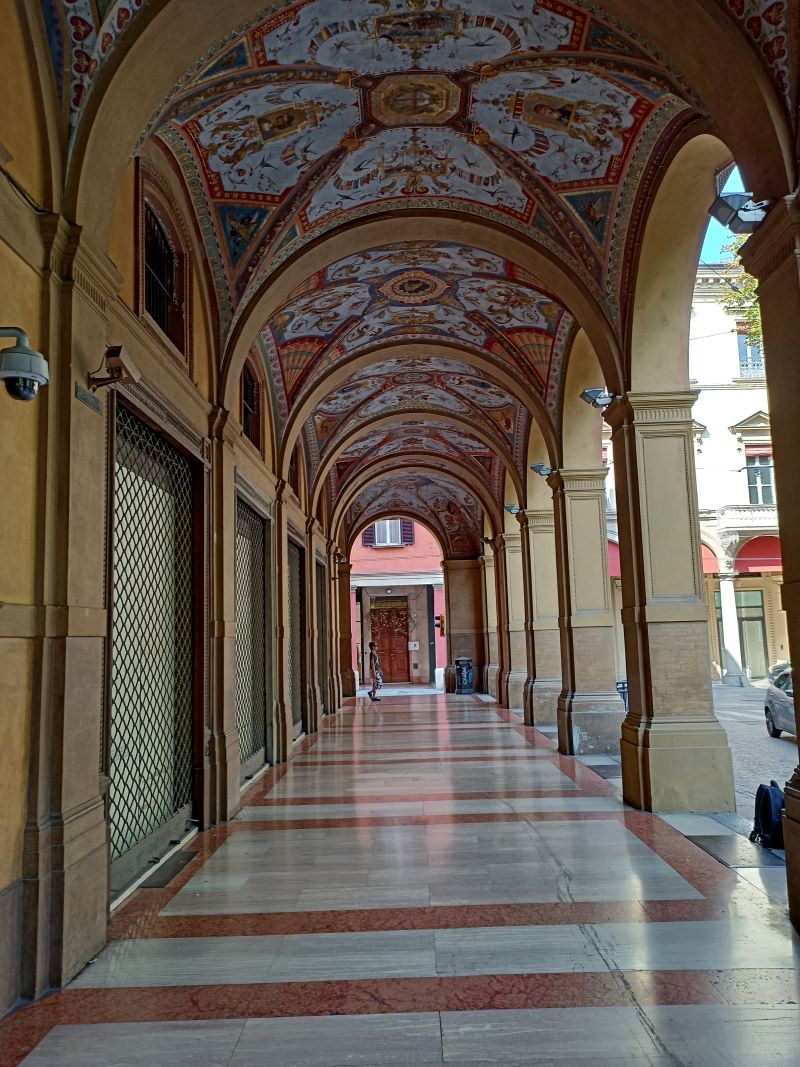
After having our hopes and dreams dashed in Verona, we decided another quick foray into another of the nearby historic towns was in order. We set our sites on Bologna, the city boasting the oldest (Western) university in continuous operation (this is the library – it’s pretty incredible to stop and think of who all attended and perused the books). We had driven past the town the previous weekend on our way to and from Verona and had watched some of the usual YouTube videos to get a feel for what to do. A little over an hour from Florence, and just 2 hours from our little agriturismo in Guasticce, it looked to offer a nice weekend. Although driving would have been easy and would have offered an option in case we “needed” to make a stop at a winery on the way, we opted to travel by train.

There are frequent trains from Florence to Bologna. They run through tunnels, under the mountain range that separates the two cities. Going back to what we relearned because we forgot, there are some pretty big mountains near Pisa and Florence – our (misguided) recollections were that the Tuscan sun shone over rolling hills of golden wheat and ripening grapes that gradually sloped to the whitewashed beaches of the Mediterranean coast. Nope – there are some big hills around here, and any travel north requires getting over or through them. Since both over and through are options, there are cheap trains that take two hours and more expensive ones that take 30 minutes. We opted for the latter. Armed with our train tickets and having booked a hotel not too far from Bologna Centrale (the central station), we set off on another adventure.

After a comfortable two-hour journey, with a change of trains in Florence, our arrival at the station was a bit of a shocker. As I said, there are two tracks one can take, over-the-mountain or through-the-tunnel. This means that there are two levels of train station – one significantly lower than the other. Also, Bologna is at a railway crossroads, sitting between Venice to the southeast, Milan to the west, north towards Verona and Switzerland, and all roads south lead to Rome and the foot of the Italian Boot. Getting off, we had no clue – we had done our research on which train would best get us to Bologna; we didn’t know which stairway, tunnel, or exit would get us out of the station. Signs pointed in many directions, but most indicated a parking lot or a different level and different tracks. None seemed to say “Uscita” (exit). We knew our hotel was in the city, south of the station, but cell reception is limited underground, Google maps didn’t work, and we were a bit turned around as to which way was north.
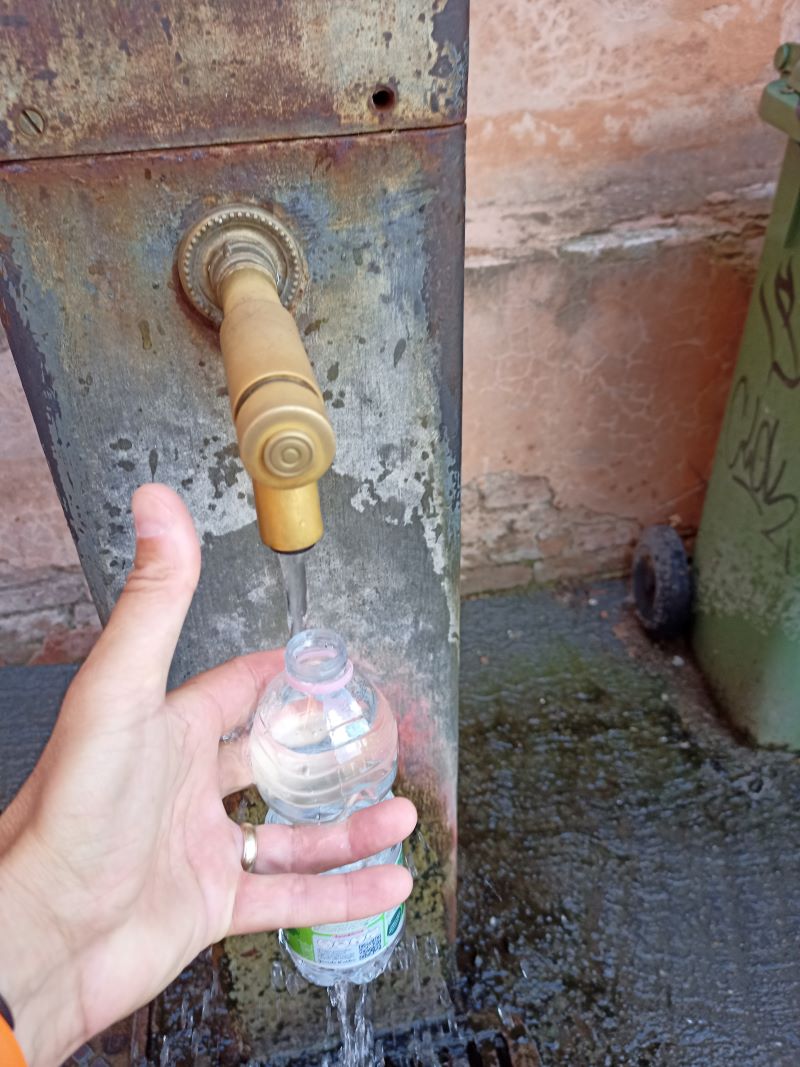
Fifteen minutes later, we managed to emerge from the station, a bit warm from the exploring we had done, and on the north side of the tracks, as far from the bridge to cross over as we could get. At least we were getting in our steps. Above ground, we got oriented and set off to the hotel. The route took us through the Saturday market – a flea market, packed with both locals and tourists, and selling tons of cheap goods. These markets are always interesting, and oftentimes we end up buying something that we hadn’t known we needed. With three new faux-leather belts (I “needed” them), cut to order, we made it to our hotel. Quick side note – if you run out of water, as we did while wandering through the labyrinthine train station, most cities have taps throughout. These are usually safe and good places to stop for a refill.
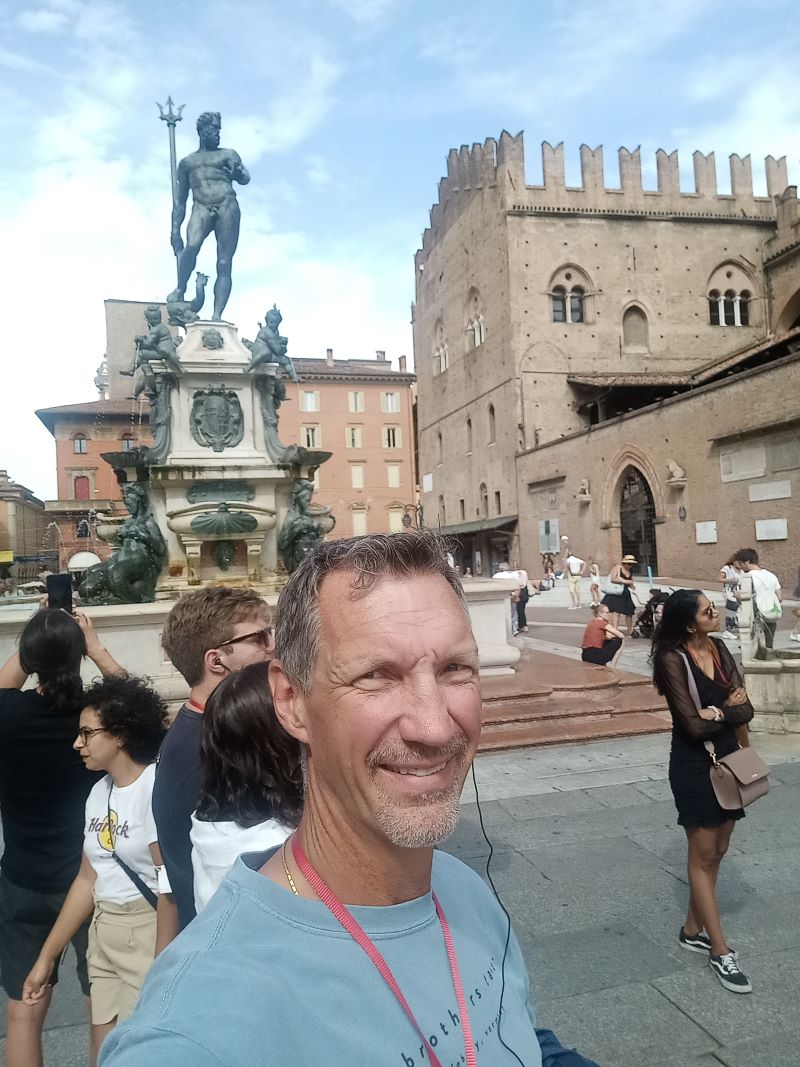
Our hotel was located in a great spot, near, but not in, the old center of the city and on a major roadway that led directly to the station (our way back was tons easier). The first thing we did was booked a tour – we have started doing this when we arrive in a new city. Although the YouTube videos and blogs are great, a short 2–3-hour tour is a great way to orient ourselves and it usually results in discovering a few things, and restaurants, that weren’t covered (and therefore are usually more authentic and less packed with everyone who “has to go there for the selfie”). We usually book through Get Your Guide and have usually had great luck and found the tours awesome (one slip up but that was a private tour we accidentally booked and ended up with plane delays and cancelations and we were stuck paying for a tour we never went on – not their fault, blame it on Lufthansa). Our tour took us around the old part of the city and past the university, the oldest one in the world still in operation and home to the first medical school studying the human body via dissection. We later visited the school and saw the room with the lab table where they dissected cadavers and taught the classes in the 13th Century.

The tour was very informative – but like in Verona (read about it here) we learned some things that we thought we knew, but we were wrong. The first thing we found out was that Bologna has 43 km of porticos – the covered and arched areas over the sidewalk. This makes it the city with the longest area of porticos in the world. Bologna’s porticos serve several purposes. Most bottom floors of buildings were commercial with residences above, and since taxes were levied based on the size of a building’s footprint, the portico extended the living area without increasing taxes on the property (tax rackets are eternal). Also, since bottom floors are commercial, sheltered shopping (out of the rain and snow in winter and heat in summer) increased foot traffic. And one of the longest continual sections of the portico went from the town up to the Sanctuary of the Madonna di San Luca – it was donated and built by the richer families in Bologna to provide a covered path for pilgrims to visit the church and for the monks to bring down the sacred relics on the annual processional. The portico is about 5 km long. We took a bus up the hill to the sanctuary and then walked back and enjoyed stopping at a couple of cafes (and enjoying a glass of wine) along the way – it was extremely pleasant and highly recommended.

We also found out that Pisa isn’t the only city in Italy with a leaning tower. Although Pisa’s is impressive, there are two, side-by-side in the middle of Bologna – they appear to be repelling each other (possibly designed – or built – after the architect enjoyed an appertivo or two). Towers were also not built necessarily for defense. Some cities (really little towns) have many towers. Often these were built by the rich families as a way to display their wealth – the higher the tower, the wealthier the family (or so they claimed). In some places, this led to “tower envy” and a “tower race” to see who could build the highest tower. Quick sidenote, in San Gimignano near Sienna, the city council had to cap the height of towers – making it illegal to build a tower taller than the city’s official tower – as the construction was out of control. Fourteen (or the more than 50 towers that were built in the town) still stand, making it one of the more picturesque hilltop towns in the area.
Michaelangelo also spent some time in Bologna. In fact, he was so impressed with some of the works, that he “borrowed” some pictures and ideas. His painting of God reaching out and banishing Adam and Eve from the Garden of Eden on the ceiling of the Sistine Chapel was actually a copy he made of the work on the door of the Bologna Cathedral. I am not sure copyright was a thing back then – at least it didn’t seem to stop artists like Michelangelo or authors like Shakespeare from appropriating some good pictures or stories and passing them along.
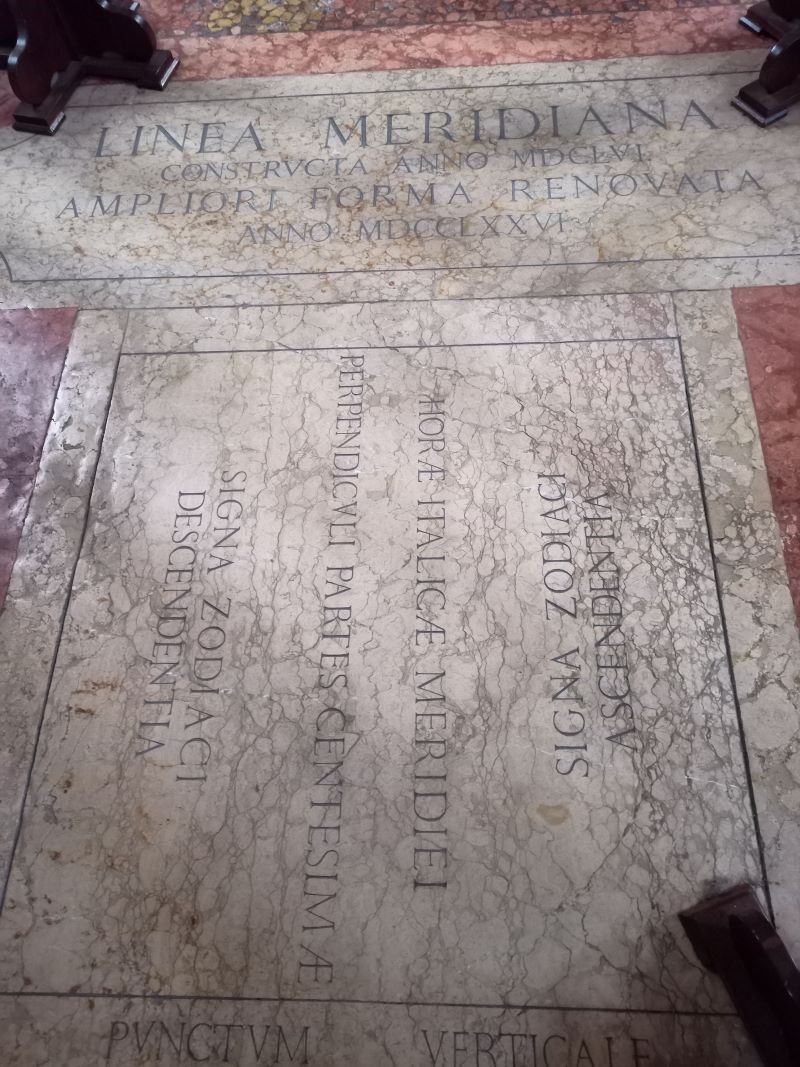
Our tour began and ended in Piazza Maggiore – a large square in the heart of the historic part of Bologna, surrounded by the University, the Palazzo d’Accursio (the old town hall and center of government), Neptune’s Fountain, and the Basilica di San Petrino (a church built in the late 1300s featuring one of the largest astronomical instruments in the world – a meridian line inlaid in the floor which is struck by an image of the sun at exactly noon every day and allowed astronomers from the university to verify Kepler’s laws of planetary motion). I bet you didn’t know you were going to learn this stuff – neither did we.
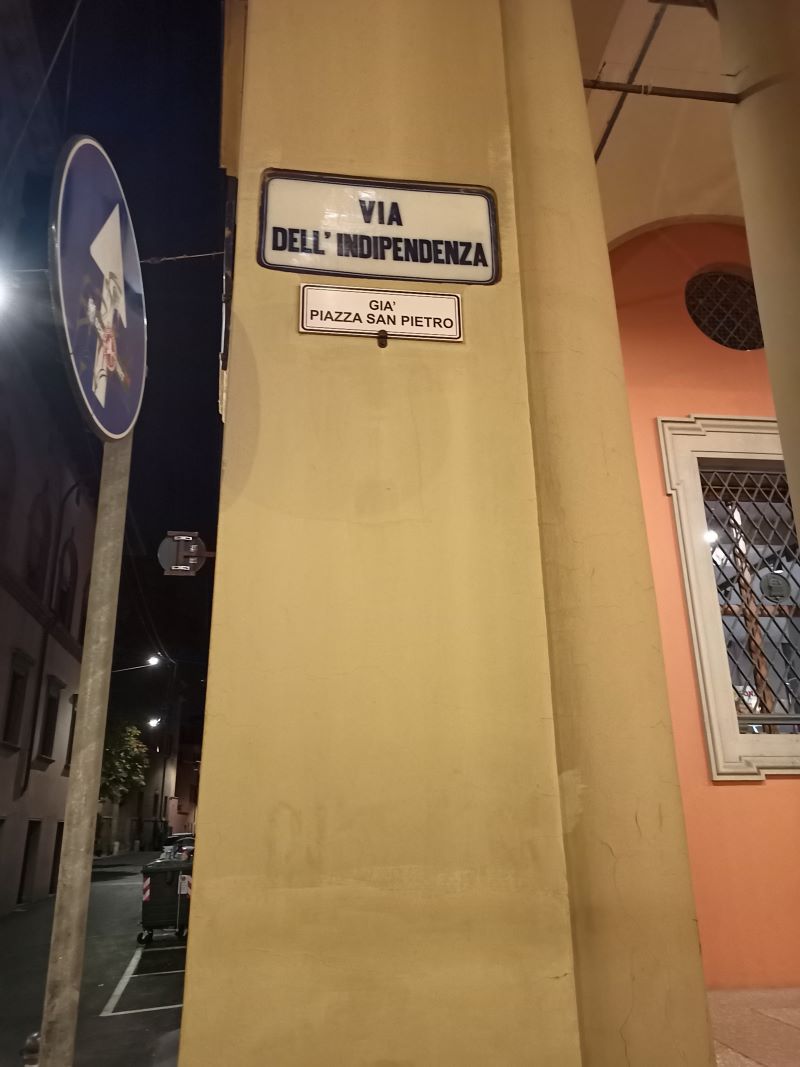
The main road running from the train station (past our hotel) into the Piazza Maggiore is Via Della Independencia. It runs right in front of the Cattedrale Metropolitana di San Pietro, Bologna’s cathedral, and the seat of the archbishop. The present structure is only 300-400 years old, but a cathedral has stood on this site for over 1,000 years. We knew that the name meant Independence – but we found out that it wasn’t from foreign powers or governments. The road in front of the church was renamed when the townspeople decided that the Vatican was no longer in charge – the independence was from the church, and the street name, right in front of the door, was to remind the archbishop and pope that they were not in charge – kind of like the crowned tops of walls in Verona indicating Rome, not the Vatican, was in charge of the city.
Armed with our newly acquired understanding of Bologna, and some recommendations for restaurants and ideas of areas to return to and explore (besides the University and Basilica previously mentioned). One more myth that was shattered by our guide, Spaghetti Bolognese is not from Bologna – Naples is actually the home of spaghetti, and Bologna doesn’t do tomatoes. However, even with this slight modification to what we thought we should eat, we were able to wander the back alleys, eat at a couple of cozy little out-of-the-way spots, and do what we have come to enjoy most here in Italy – sit back, eat, have a drink, and just watch life and people pass by. We thoroughly enjoyed our couple of days in Bologna. Having learned our lessons on where to catch the train on our arrival, our return trip down Via Della Independencia to Bologna Centrale was stress-free. This time, nobody was on strike and trains were running on schedule. Another good weekend in the books. And although we still have many places we want to go and see, Bologna is a city we plan to return to and continue to explore.
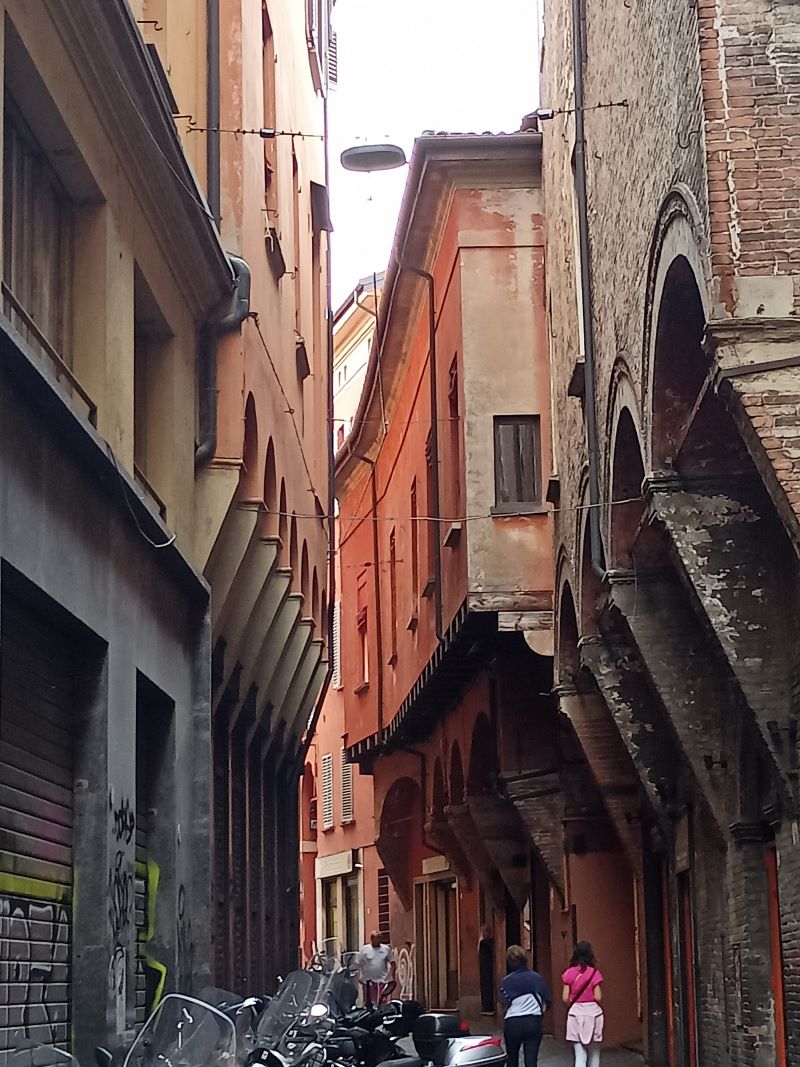
One more quick side note I should probably include here, for those who enjoy sitting at some of the little street and sidewalk tables in some of the narrow alleys. The streets look pedestrian-only, but cars sometimes actually drive through them. Most times, the cars squeeze through. However, when you own a car that is a little bigger than the tiny cars that Italians drive, you don’t quite fit. My mortified wife hid under the dash as I got stuck and knocked over a table or two, trying to get through one such street. She did manage to snap a picture, which she sent to our daughters with a short message, “Look at what your dad is doing”. I pass this along, not only to warn you about trying to drive down those streets (I recommend don’t) but to be aware of someone like me, who might not take my own advice, and end up meeting you – or worse yet, spilling your wine.
